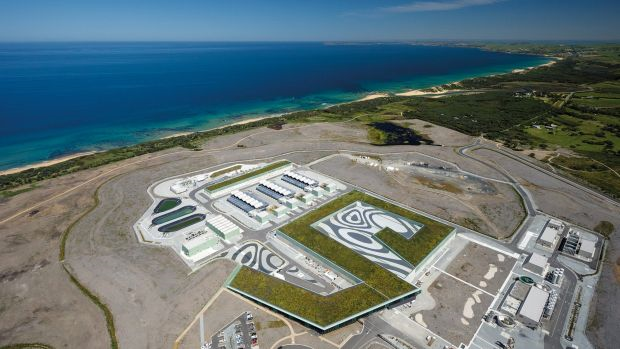TUNISIA’s national water utility, SONEDE, will build a new seawater desalination plant along the country’s Mediterranean coast. SONEDE has acquired a loan of $328 million from the Japan International Cooperation Agency to build the plant. The facility will produce 100,000 cubic metres of water per day for the country’s second largest city, Sfax.[1]
Home to 600,000 people, Sfax experienced a water shortage in 2017—and is expected to fall short of its daily demand for water in the amount of 150,000 cubic metres by 2030. The project and others like it may begin to address this projected water scarcity.
AUSTRALIA – The Andrews government has set a new threshold for the state’s water corporations when it comes to water storage levels. Should levels fall below 60 percent by November 30, Melbourne’s multibillion-dollar desalination facility will be utilized at its full capacity for the first time. The plant currently provides three percent of the city’s water supply.[2]
Rainfall in July was below average and The Bureau of Meteorology has reported that the dry period may extend through spring 2018. If this projection becomes a reality, Melbourne’s water corporations may request a water order of 1.5 billion cubic metres for the year.
If the facility’s infrastructure is augmented it is possible that the plant’s capacity will be increased by 50 million cubic metres per year.[3]

Credit: The Age – Victoria
SOUTH AFRICA – Next week Solaqua Holdings, a Ballito company, will begin construction on its second desalination plant on the Dolphin Coast.[4] Located at the Blythedale Coastal Estate, the facility will produce between 8,000 and 10,000 cubic metres of water per day.
The plant will be powered largely by solar energy installed nearby and utilize new desalination units which are portable and may be transferred to other areas during water crises.
USA – Although Texas has an extensive coastline ideal for seawater desalination—the state has yet to build a facility that would treat its Gulf coast waters. But this is set to change in the near future.
In 2015 the Texas Legislature passed bills allowing for the use of seawater desalination for industrial purposes and subsequently created a water plan that includes seawater desalination (with the goal of producing roughly 143 million cubic metres per year by 2070).[5] Officials are now making progress towards this goal. In Austin last week, the Texas Water Development Board approved an award of $2.75 million dollars toward the financing of a seawater desalination plant in Corpus Christi.[6]
[1] “Tunisia’s SONEDE secures $328 million for Sfax seawater desal project,” Desalination.biz, July 19, 2017, <https://www.desalination.biz/news/0/Tunisias-SONEDE-secures-328-million-for-Sfax-seawater-desal-project/8804/> accessed July 29, 2017.
[2] “Melbourne’s Dwindling Water Storages Could Trigger Maximum Order from Desal Plant,” The Age – Australia July 19, 2017 <http://www.theage.com.au/victoria/melbournes-dwindling-water-storages-could-trigger-maximum-order-from-desal-plant-20170718-gxdois.html> accessed July 29, 2017.
[3] Ibid.
[4] Allan Troskie, “First desalination plant for the Dolphin Coast,” The Citizen, July 27, 2017, <http://citizen.co.za/news/south-africa/1588031/first-desalination-plant-for-the-dolphin-coast/> accessed July 30, 2017.
[5] Chris Ramirez, “Corpus Christi gets $2.7 million for future seawater desalination project,” Corpus Christi Caller Times, July 20, 2017, <http://www.caller.com/story/news/2017/07/21/corpus-christi-gets-2-7-million-future-seawater-desalination-project/497741001/> accessed July 29, 2017.
[6] Ibid.

